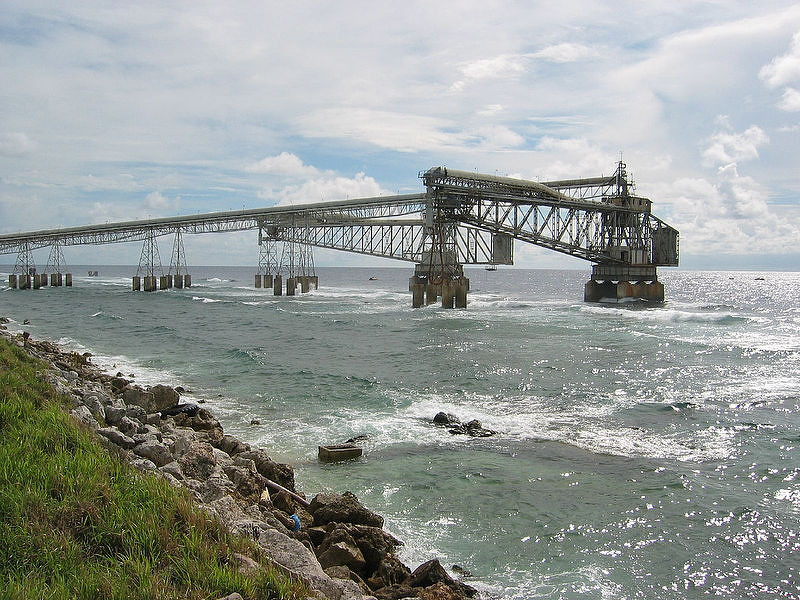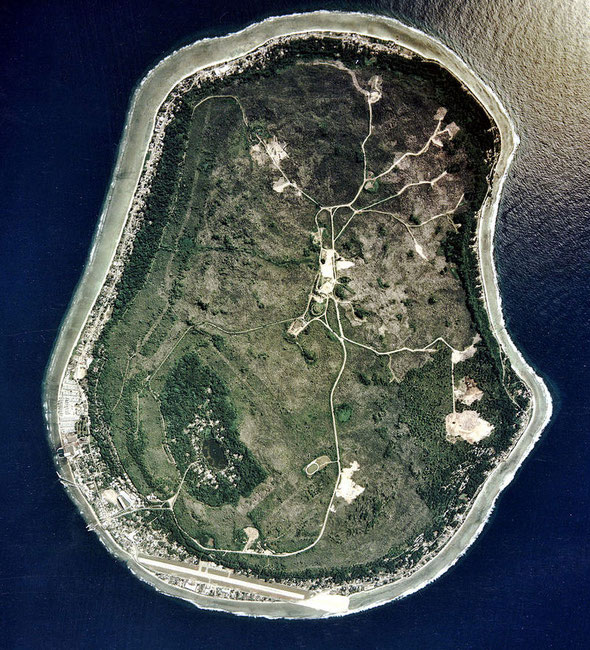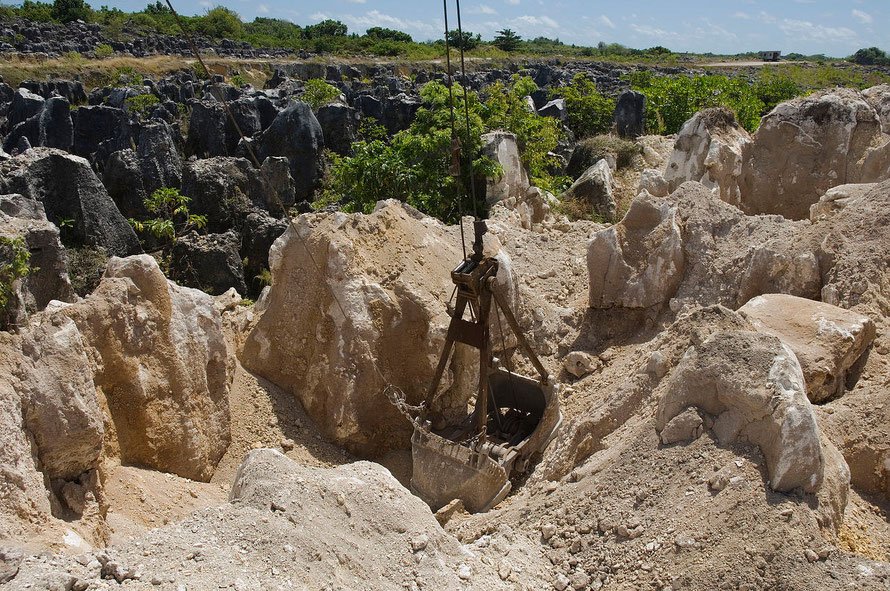III. Nauru: the phosphate grab

The colonial exploitation of phosphate from Nauru for New Zealand's benefit
The sad history of the Pacific island of Nauru, (and its neighbour, Banaba) the smallest country in the world after the Vatican City, and its entanglement in the joint 'trusteeship' of New Zealand,
Australia and the UK and the profit-taking British Phosphate Commission until independence in 1968 might also help check too much self-congratulation on the
clean green pastures of New Zealand (see Wikipedia: Nauru).
'In the year 1948, revenues from phosphate mining [from Nauru] were A$745,000. A minuscule 2% (A$14,900) was being returned to the Nauruans, while 1% was being charged for "administration".'
(UNIYA
Jesuit Social Justice Centre, 2005 p.2)
King (2003 p.438-9) in History of New Zealand comments on the fate of Nauru (formerly 'Pleasant Island' and Banaba (formerly 'Ocean Island'):
Both islands were ruthlessly stripped of guano and rock phosphate, without any regard for the welfare of their inhabitants, to feed the farmers of the mandate member countries [New Zealand,
Australia and the UK].
After World War II, the aerial top-dressing industry enabled that fertiliser to be spread widely, cheaply and efficiently. New Zealand's application peaked in 1985 at more than 3 million tons, or
2 per cent of the world's total.

In 1927 the BPC was paying royalties of one and a half old UK pence per ton of phosphate extracted. This rose to 9% of the substantially under-market value prices received for the phosphate in
1939 shortly before invasion by the Japanese.
(For more on Nauru, its people and current state of poverty see JaneResture and this 2005 paper from UNIYA, the Jesuit Social Justice Centre.)
The largely-depleted island now hosts Australia's Nauru detention centre for up to 800 asylum seekers to Australia. See this Guardian article of August 2014 on a Save the Children report on
the 'systematic violation' of child asylum seekers rights at the camp and Andrew Bartlett's blog on the camp and its closure and re-opening by Labour Governments in 2008 and 2012 in pursuit of Australia's Pacific
Solution. The 2012 legislation passed 'strips away legal safeguards for asylum seekers subject to offshore processing' (Australian Refugee Council).
In 2013 The Australian Government sign[ed] a new memorandum of understanding with Nauru similar to its Regional Resettlement Arrangement with Papua New Guinea. Asylum seekers who are
transferred to Nauru for processing and found to be refugees could be settled in Nauru permanently (Australian Refugee Council).
The Republic of Nauru Phosphate Corporation continues to employ 20% of the island's workforce and hopes to exploit a deep layer
of phosphate rocks. Around 100 million tonnes of phosphate has been extracted from the island since 1921.
See this interesting blog by Jan Logie on blog.greens.org.nz about recent judicial
developments on Nauru and New Zealand's limited reparations to Nauru.

